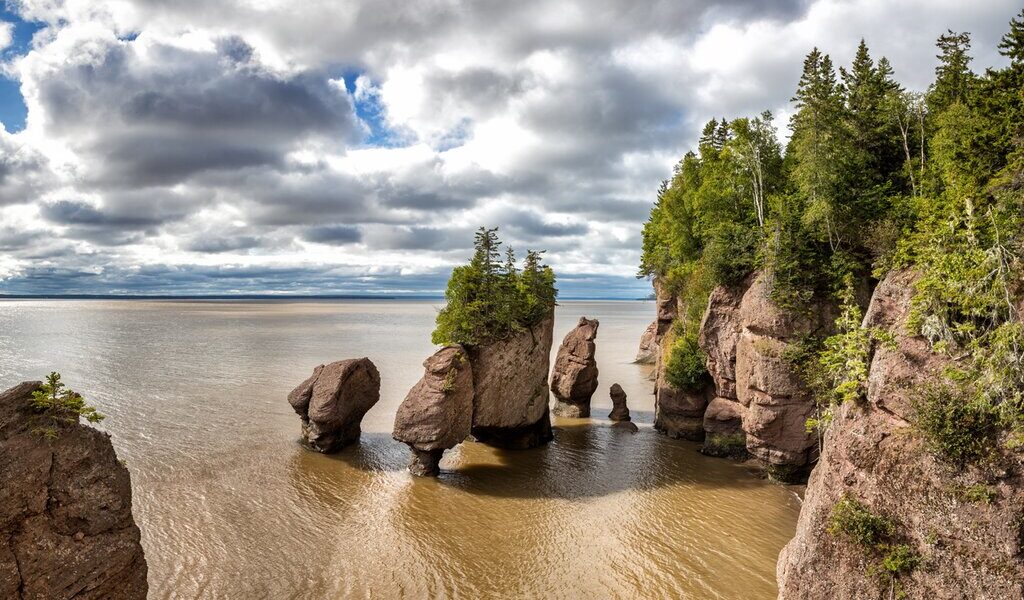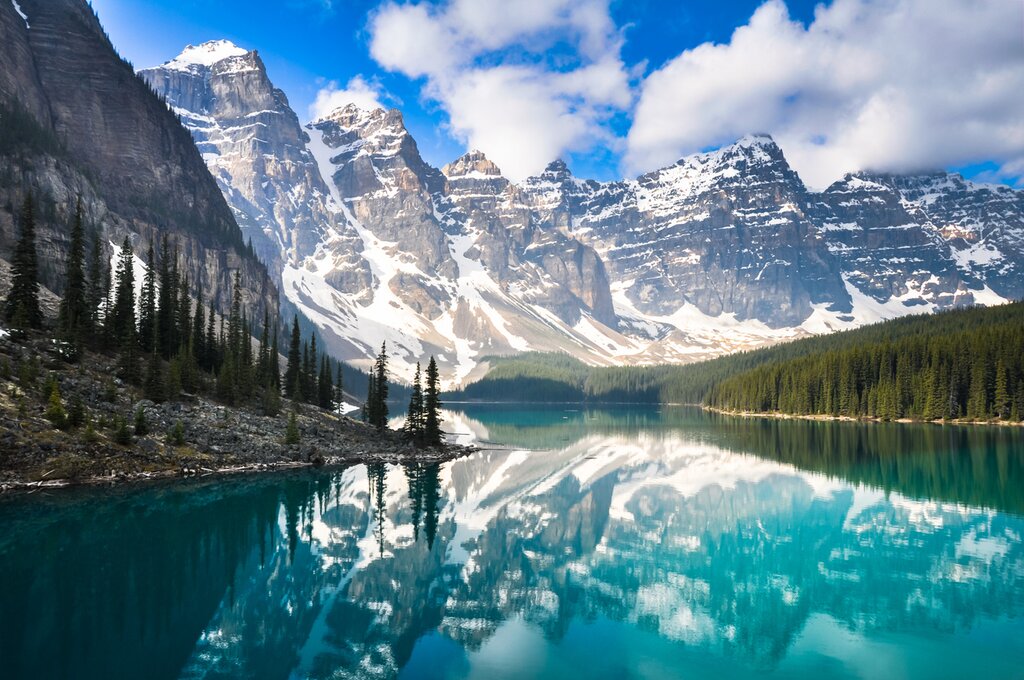
Abundant in nature, culture, scenery, and sport, Canada is welcoming in all seasons. The best time to visit with the most predictable weather is May to September. Expect long, hot summer days with bustling streets during this peak tourist season. Visit between October and April to experience Canada’s changing foliage and cold winter with picturesque scenery, possible northern light sightings, and cups of hot cocoa by the fire to warm up after a day of winter activities like skating, skiing, and dog sledding._x000D_
A Comprehensive Guide to Seasonal Planning for Canada Travel
Canada, a nation of immense scale and remarkable diversity, stands as the second largest country on our planet. Its sprawling land mass encompasses approximately 4 million square miles, equivalent to a staggering 10 million square kilometers. Such vastness naturally translates into an unparalleled variety of landscapes and distinct seasonal patterns, each offering its own unique charm and attractions. From the lush, temperate rainforests gracing the province of British Columbia to the arid, sun-baked desert regions of Alberta, Canada presents a breathtaking spectrum of natural wonders. Venture further and you’ll discover the varied terrains and expansive tundra of the Northwest Territories, Yukon, and Nunavut, each a testament to the country’s northern beauty. Not to be overlooked are the windswept and rugged Atlantic provinces, including Newfoundland, Prince Edward Island, Nova Scotia, and New Brunswick, where the power of the ocean shapes the land and the culture.
The Canadian seasons offer a study in contrasts. During the summer months, average temperatures typically range from lows of 65°F (19°C) to highs of 85°F (30°C), providing pleasant conditions for outdoor adventures. In contrast, winter months see temperatures plummet, hovering around 20°F to -4°F (-5°C to -20°C). In the far northern reaches of the country, temperatures can occasionally plunge even further, reaching a frigid -22°F (-30°C). Given its sheer size, Canada experiences a wide range of climatic conditions, resulting in significant variations in weather patterns from day to day and from one region to another. This dynamic climate is a defining characteristic of the Canadian experience, adding an element of unpredictability and excitement to any visit.
Eastern Canada is known for its challenging winters, marked by heavy snowfall and icy conditions. However, the region’s short but mild summers provide a welcome respite, making it an ideal time for exploration. In the heart of the country, Ontario, Québec, and Manitoba experience hot and humid summers, while Saskatchewan offers a warmer, drier climate during the same period. Alberta and British Columbia also enjoy high temperatures in the summer months, although the coastal towns of Tofino and Ucluelet in British Columbia benefit from milder temperatures influenced by the Pacific Ocean. To avoid the intense heat and the influx of tourists that accompany the peak summer season, consider planning your visit during the shoulder months of spring or fall. These periods offer a delightful balance of pleasant weather and fewer crowds, allowing you to experience the beauty of Canada at a more relaxed pace.
| Seasons | Pros | Cons | Best for | Where to Visit |
| Spring (Mar-May) | Fewer crowds than in summer. A chance to witness the awakening of nature after the long winter months. Longer daylight hours allow for more exploration. | Wet and cool temperatures are common, requiring appropriate clothing. Some attractions may have limited hours or be closed for the season. | Iceberg viewing in Newfoundland, offering a spectacular natural phenomenon. Whitewater rafting on rivers swollen with spring runoff. Witnessing blossoming flowers as nature bursts back to life. Wildlife viewing as animals emerge from hibernation. | Ottawa, for the Tulip Festival and springtime activities. The East Coast, for iceberg viewing and coastal exploration. Jasper National Park, for wildlife and early-season hiking. |
| Summer (Jun-Aug) | All areas are accessible, opening up the full range of Canadian landscapes. Warm weather is ideal for outdoor activities. Festivals and events are in full swing. | Crowds and busy lines are common at popular attractions. Higher prices for accommodation and activities. The heat can be intense in some regions. | Outdoor activities such as swimming in lakes and rivers. Camping in national and provincial parks. Boating and water sports on Canada’s many waterways. | Ottawa River, for whitewater rafting. Cape Breton Island, for scenic drives and coastal hikes. Niagara Falls, to experience the power of nature. |
| Fall (Sep-Nov) | Stunning fall foliage transforms the landscape into a tapestry of colors. Fewer crowds than in summer, allowing for a more peaceful experience. Milder temperatures are ideal for hiking and outdoor pursuits. | Some visitor centers close for the season. Cooler, damp weather is common, requiring appropriate clothing. Daylight hours are shorter. | Hiking through forests ablaze with autumn colors. Scenic road trips to admire the fall foliage. Attending harvest festivals and experiencing local culture. | Algonquin Park, for stunning fall colors. Niagara-on-the-Lake, for wine tasting and harvest festivals. Lake Louise, for breathtaking mountain scenery. |
| Winter (Dec-Feb) | Picturesque scenery with snow-covered landscapes. Fewer crowds than in summer, offering a more tranquil experience. Opportunities for winter sports and activities. | Cold weather requires appropriate clothing and preparation. Winter storms can disrupt travel plans. Some attractions may have limited hours or be closed. | Attending winter festivals and experiencing Canadian winter culture. Relaxing in cozy cottages with fireplaces. Enjoying winter sports such as skiing, snowboarding, and ice skating. Chasing the northern lights in the northern territories. | Québec City Winter Carnaval, for a festive winter experience. The Rocky Mountains (British Columbia and Alberta), for skiing and snowboarding. Yukon, for northern lights viewing and winter adventures. |
The Enchanting Embrace of Spring in Canada (March to May)
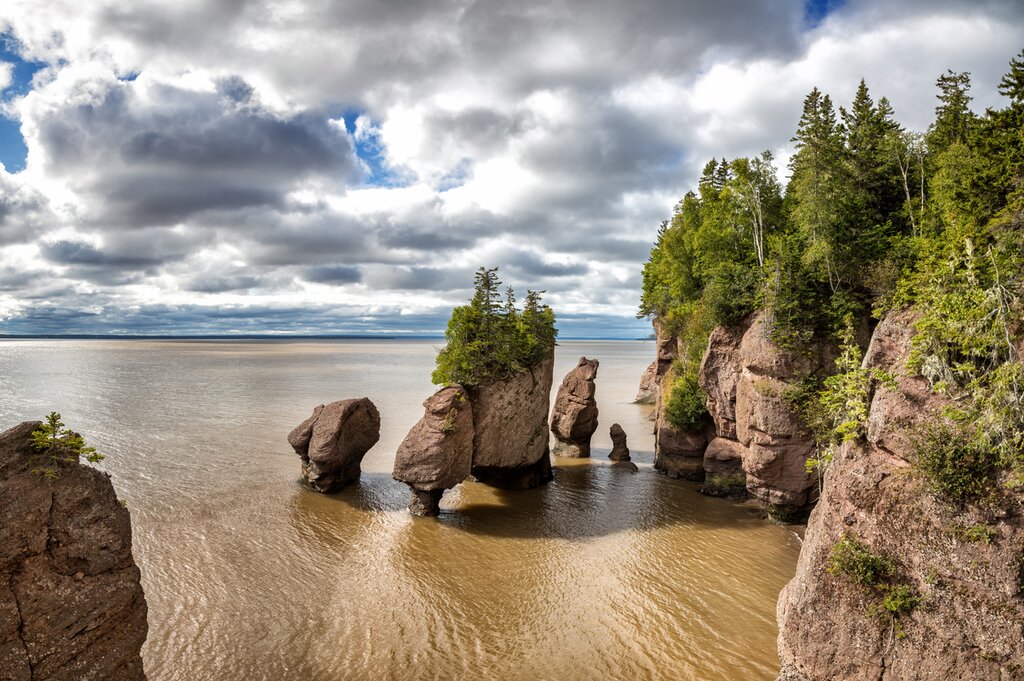
Springtime in Canada is a season of revitalization and renewal, a delightful time to witness the country awaken from its winter slumber. As the days gradually lengthen and brighten, temperatures begin to rise, especially in the latter part of the season. However, it’s worth noting that spring weather in Canada can be somewhat unpredictable, with some regions still experiencing snowfall well into the season. The transition is a gradual one, a dance between the lingering chill of winter and the burgeoning warmth of spring.
As the snow melts and the ice thaws, animals emerge from their winter hibernation, eager to explore their surroundings. The landscape transforms as flowers begin to blossom, painting the countryside with vibrant hues. One of the most celebrated events of the spring season is the annual Ottawa Tulip Festival, held in Canada’s capital city. This spectacular event showcases over 300,000 tulips in full bloom, creating a breathtaking display of color that attracts visitors from around the world. The festival is not only a visual feast but also a testament to the enduring friendship between Canada and the Netherlands.
Just a short distance from Ottawa, the Ottawa River offers an entirely different kind of springtime experience. The river’s rapids reach their peak in spring, with water levels rising dramatically. This creates ideal conditions for whitewater rafting, providing thrill-seekers with an opportunity for an exhilarating adventure. The powerful currents and exhilarating splashes of the Ottawa River make it a must-visit destination for those seeking an adrenaline rush.
Meanwhile, on the east coast, the month of May marks the peak season for icebergs migrating south off the coasts of Labrador and Newfoundland. This region, aptly named “Iceberg Alley,” attracts artists, photographers, and sea kayakers from far and wide, all hoping to catch a glimpse of these magnificent ice formations. The sight of these colossal icebergs drifting majestically through the ocean is a truly unforgettable experience.
Further south, in New Brunswick, the Bay of Fundy boasts the world’s highest and lowest tides, with a staggering change of 53 feet (16 meters). This natural phenomenon creates a constantly evolving landscape, offering visitors a unique opportunity to explore the intertidal zone. Hopewell Rocks National Park, a popular destination within the Bay of Fundy, opens in mid-May but remains accessible year-round. Visitors can kayak around the park’s distinctive rock formations during high tide, then return approximately six hours later to walk along the ocean floor as the tide recedes. This twice-daily transformation is a testament to the power and beauty of nature.
On the opposite side of the country, in British Columbia, spring offers a variety of outdoor activities. Adventure seekers can raft the glacial waters of the Kicking Horse River, while mountain biking enthusiasts can hit the trails in Rossland, known as Canada’s mountain biking capital. Nature lovers can trek through the ancient rainforests of Clayoquot Sound or Barkley Sound, enjoying stunning scenery with fewer crowds. Whale-watching excursions are also a popular activity during this time, offering a chance to spot majestic whales migrating along the coast. In Western Alberta, Jasper National Park beckons with its abundant wildlife, scenic hiking trails, and cascading waterfalls. Consider a journey through the Rockies, as highlighted in a suggested 10-day itinerary, to fully experience the beauty of Jasper and its surrounding landscapes.
Events in Spring
Cherry Blossom Festival, Vancouver. Every March, the city of Vancouver is transformed into a sea of pink as cherry blossoms bloom, adorning the streets with their delicate petals. The Cherry Blossom Festival celebrates this beautiful spectacle with live music, biking tours, guided walks, and picnics, with most events offered free of charge. It’s a wonderful opportunity to immerse yourself in the beauty of nature and experience the vibrant culture of Vancouver.
Elmira Maple Syrup Festival, Elmira. Canada holds the esteemed title of being the world’s largest exporter of maple syrup, a testament to its rich maple-producing heritage. Each April, the town of Elmira hosts the Elmira Maple Syrup Festival, a celebration of all things maple. Visitors can explore a variety of local vendors, sample delectable maple treats, and explore scenic outdoor trails while learning about the history of maple harvesting in Canada. It’s a sweet and educational experience for the whole family.
Ottawa Tulip Festival, Ottawa. As mentioned earlier, the Ottawa Tulip Festival is a colorful annual event that celebrates the return of spring in Canada’s capital city. Held every May, the festival showcases more than 300,000 tulips in full bloom along the Rideau Canal, creating a picturesque scene that is sure to captivate visitors. The festival is a symbol of the enduring friendship between Canada and the Netherlands and a celebration of the beauty and renewal of spring.
The Sizzling Splendor of Summer in Canada (June to August)
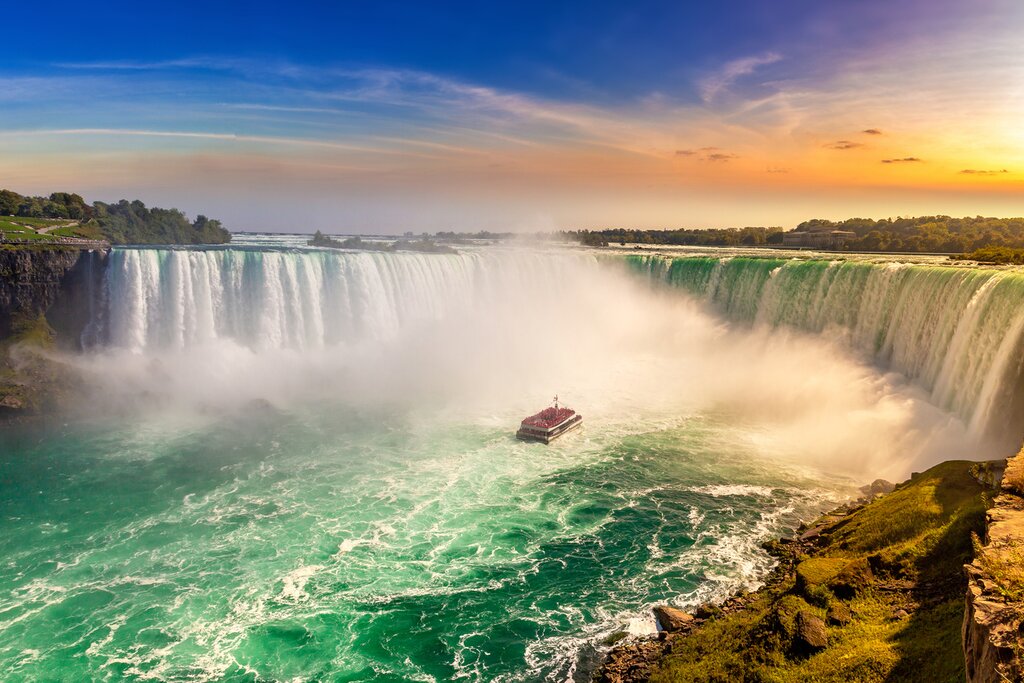
Summer in Canada is synonymous with sunshine, warm weather, and a vibrant atmosphere. As the peak tourist season, it’s a time when the country comes alive with festivals, outdoor activities, and bustling crowds. Expect warmer temperatures and increased activity at all major sights, including the iconic Niagara Falls. To avoid the largest throngs of tourists, consider visiting in early June, when the weather is pleasant, and the crowds are slightly smaller. Witness the awe-inspiring spectacle of 3,160 tons of water cascading over the falls every second, a truly powerful and unforgettable sight.
After experiencing the raw power of Niagara Falls, take a scenic drive along the Niagara Parkway, a 5-mile (8 km) stretch of road that offers stunning views of the Niagara River. Hike the Niagara Glen, where you can admire the turquoise waters of the Niagara Whirlpool and the dramatic rock cliffs of the gorge. Continue your journey another 10 miles (16 km) up the river to explore the Old Town of historic Niagara-on-the-Lake, a charming town known for its well-preserved 19th-century architecture and vibrant cultural scene.
As cottage season arrives in Ontario, many Canadians flock to their lakeside retreats in the Muskoka’s or Algonquin Park. These regions offer a tranquil escape from the hustle and bustle of city life, with pristine lakes, lush forests, and endless opportunities for outdoor recreation. Spend your days swimming, boating, hiking, or simply relaxing by the water’s edge.
On the east coast, summer temperatures are generally milder, averaging about five degrees cooler than in other parts of Canada. This makes it an ideal time to explore the friendly Maritime provinces by foot or car. Halifax, with its historic waterfront and vibrant culture, is a must-see destination in Nova Scotia. Visit the picturesque fishing village of Peggy’s Cove, known for its iconic lighthouse and rugged coastline. Embark on a scenic drive along the Cabot Trail, a world-renowned route that winds through the stunning landscapes of Cape Breton Island. In Newfoundland, visit in June to avoid the peak tourist season and hike the historic hillside trail on Signal Hill, offering dramatic descents and panoramic views of the capital city of St John’s. History buffs should make their way to the northernmost tip of the island to visit L’anse aux meadows, the site of the first known Viking settlement in North America.
While the summer season in Canada inevitably draws larger crowds, consider venturing to the far north for a unique experience with fewer tourists to contend with. The long daylight hours of the summer months provide ample time for exploration, and the off-the-beaten-path adventures are sure to create lasting memories. For insights on visiting the Yukon during this season, explore options for active summer adventures in this captivating territory.
Events in Summer
Calgary Stampede, Calgary. The Calgary Stampede, an iconic event that celebrated its centennial anniversary in July 2012, is a must-experience for anyone visiting Calgary during the summer. This world-renowned festival hosts rodeos, evening shows, live music performances, and a diverse array of food vendors, attracting millions of visitors each year. Don your cowboy boots and hats, and prepare to stomp on down to this lively and unforgettable festival.
Montréal International Jazz Festival, Montréal. Each June, the city of Montréal comes alive with the vibrant sounds and performances of the Montréal International Jazz Festival. This ten-day extravaganza draws over 2 million visitors and holds the Guinness World Record for being the largest jazz festival in the world, a title it earned in 2004. Immerse yourself in the cool and jazzy atmosphere of this world-class event.
The Fiery Farewell of Fall in Canada (September to November)
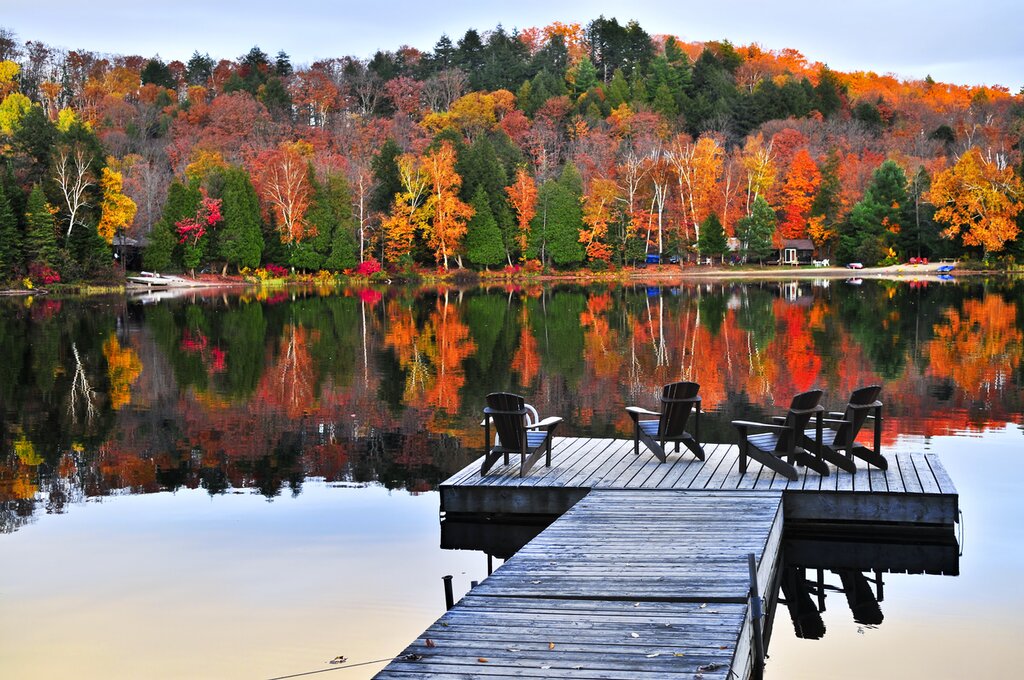
As summer fades into memory, Canada transforms into a breathtaking landscape of vibrant colors as the fall foliage begins its annual spectacle. Reds, yellows, and oranges paint the forests, creating a stunning visual display that is truly awe-inspiring. Arrive early in the season to witness the gradual shift into cooler temperatures and experience the abundance of color at its peak.
Algonquin Park in Ontario, the largest provincial park in Canada, is the ultimate destination for experiencing the beauty of autumn. Hike through the park’s extensive trail system, paddle along its pristine waterways, camp under the stars, or embark on a scenic road trip through its rolling hills. The transitional weather in September often brings warm, sunny days and cool, breezy nights, so pack layers to ensure maximum comfort. September is an ideal time to visit, as the crowds have thinned out with the return of school and work schedules.
For culinary enthusiasts, fall is harvest season in Niagara’s wine country. The Grape & Wine Festival and the Ball’s Falls Thanksgiving Festival offer opportunities to explore the tastes of the season and sample Canada’s world-class wines. The milder temperatures of British Columbia also make it an excellent time to visit and explore the idyllic Okanagan Valley, another renowned wine region. Consider embarking on a cross-province adventure through the Okanagan and the Canadian Rockies, experiencing the diverse landscapes and culinary delights of this region.
Next to spring, fall is an exceptional time of year to observe orca and humpback whales on the Pacific coast. Whale watching tours are available in Vancouver and throughout nearby Vancouver Island, providing a chance to witness these majestic creatures in their natural habitat. While on northern Vancouver Island, watch the dramatic storms roll in off the Atlantic in coastal towns like Tofino and Ucluelet. The west coast offers year-round hiking, surfing, and geothermal pools, which are all the more enjoyable to visit with fewer crowds during the fall season.
As October arrives, the days grow shorter, and the skies darken, creating optimal conditions for viewing the northern lights. Regardless of the province you’re in, heading north will increase your chances of witnessing this breathtaking natural phenomenon. Popular sighting locations include Goose Bay in Newfoundland, Yellowknife in the Northwest Territories, and even Manitoulin Island in Ontario.
Events in Fall
Toronto International Film Festival (“TIFF”). Every September, Toronto plays host to the Toronto International Film Festival (TIFF), one of the world’s most prestigious film festivals. This star-studded event attracts nearly 500,000 visitors to Toronto, offering screenings of hundreds of films and the chance to encounter famous actors.
Oktoberfest, Kitchener-Waterloo. The twin cities of Kitchener-Waterloo host the second-largest Oktoberfest celebration in the world, after Germany’s own. In September, the Bavarian spirit comes alive with music, dance, traditional clothing, and delicious food.
Polar Bear Marathon, Churchill. For a truly unique and unforgettable experience, race to the north in November to participate in the Polar Bear Marathon in Churchill, Manitoba. This remote location offers the chance to see polar bears, Beluga whales, and the mesmerizing northern lights, making it a truly extraordinary adventure.
The Winter Wonderland of Canada (December to February)
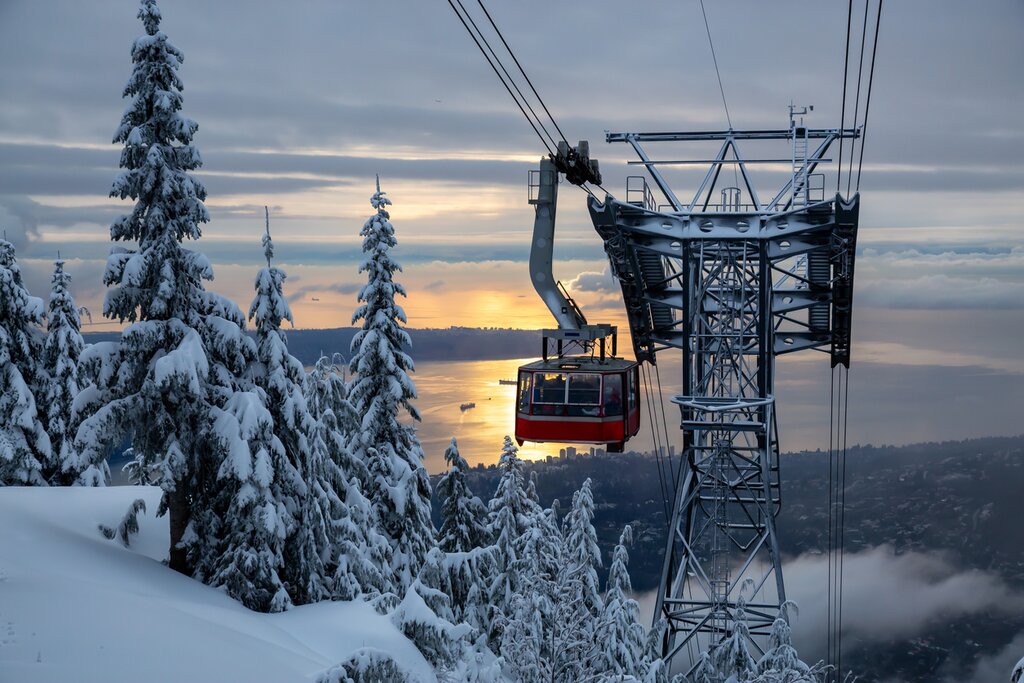
Winter in Canada is a season of snow-covered landscapes, cozy cabin retreats, and exhilarating winter sports. Expect cold winter days and continuous snow cover in all provinces, with the exception of the southern regions on the west coast, which experience milder temperatures.
This is the perfect time to embrace the cabin lover’s lifestyle in Canada. Cozy up with a hot chocolate and your favorite book, and watch the snow fall as you sit by the fire. Escape the city lights and book yourself a cottage in Northern Ontario, where you can immerse yourself in the tranquility of the winter landscape. There’s no shortage of winter sports to enjoy; hike the trails in Algonquin Park, snowshoe around Blue Mountain Resort, or snowmobile in Bruce Peninsula National Park.
Winter months are generally milder on the west coast, with little snowfall. However, as you venture inland, you’ll find the perfect conditions for extreme winter sports and world-renowned ski and snowboarding runs, such as Whistler Blackcomb and Revelstoke. Enjoy dramatic views of Vancouver from the ski hills on Grouse Mountain or experience the stunning fjords and coastal forests of Howe Sound on the Sea to Sky Gondola. In Alberta, Sunshine Village Ski and Snowboard Resort offers the unique opportunity to ski on the Continental Divide of the Rocky Mountains, allowing you to hit the slopes in both provinces (British Columbia and Alberta) and enjoy the lively après-ski scene in Banff.
Alternatively, consider a winter getaway to Québec, where you can expect copious amounts of snow. Bundle up and explore Québec City’s Winter Carnaval, held every February. This historic UNESCO-protected site transforms from cobblestone streets into a winter wonderland with impressive ice sculptures, exhilarating ice slides, charming skating rinks, and beautiful light displays. Further north, in Nunavut, winter persists from November to March, bringing frigid temperatures and unparalleled solitude in the northern communities. For a truly off-road experience, adventurous travelers can try dogsledding or embark on a thrilling snowmobile adventure.
Events in Winter
Québec Winter Carnaval, Québec. Thousands of visitors flock to historic Québec City every February to experience the magic of the annual Québec Winter Carnaval. Parades, ice slides, snow sculptures, captivating shows, and enchanting skating rinks create a winter wonderland for visitors of all ages.
Distillery Winter Village, Toronto. Each year, the Distillery District in Toronto transforms into a festive winter market known as the Distillery Winter Village. As you stroll through the vendors’ market and art galleries, the enticing aromas of mulled wine and warm cooking fill the crisp air, creating a truly magical atmosphere.
B-250

